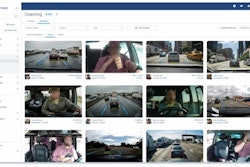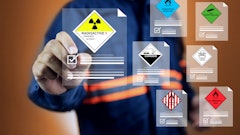
Historically, “workplace safety” was largely associated with physical precautions such as wearing protective gear and preventing slips and falls. However, evolving workforce demographics, shifting regulatory landscapes, and rapid technological advancements are redefining what safety means in the modern workplace.
For many of today’s workers, safety isn’t just physical.
“Workplace safety in 2025 isn’t just about hard hats and hazard signs — it’s about trust, mental well-being, and adapting to a rapidly changing world. Employers who listen, communicate clearly, and invest in both people and policies won’t just keep workers safer — they’ll keep them engaged, focused, and far more likely to stick around,” according to a report released by EMCI Wireless.
Key takeaways:
· When it comes to safety concerns, Americans as a whole are most worried about health outbreaks, such as the flu and COVID-19. Gen Z breaks away from this mold: their top fears are physical injury and mental burnout. Women, in particular, rank burnout as a bigger threat than men do.
- 46% of Americans fear a coworker could turn violent on the job.
- 43% of Americans have taken time off due to burnout or mental health stress, and one in four have even quit a job over these safety concerns.
- 53% of Americans have seen a hostile verbal conflict at work, and more than one in four were involved themselves.
- Nearly one in four Americans accept dangerous responsibilities at work due to fear of being fired, prioritizing income over their own safety.
- 38% of Americans would feel less safe with guns permitted at work, but 48% of Gen Z say armed coworkers would make them feel safer.
- More than one in three Americans say recent ICE activity has made their workplace feel less safe.
- Safety concerns cause nearly one in three Americans to lose focus at work multiple times a week and one in 10 are so burned out they want to quit every single day.
- Gen Z leads the pack in reporting emotional harm or dual injury (41%), while baby boomers are the least likely to say the same at work (17%).
- Gen Z is the most likely to consider quitting because of burnout at least a few times a month (63% vs. 47% for Americans overall), if not weekly or even daily. That’s more than a bad mood; it’s a retention crisis waiting to happen.
- 24% of U.S. workers have quit a job due to safety concerns at work. That figure jumps up to 38% for Gen Z, with 11% having quit in the last 12 months.
- Americans are split 50/50 on whether they want their employer to integrate AI more. 20% of workers strongly support more AI and smart tech integration in their workplace for safety, while 30% of workers want to see an increase in AI integration from their employer to improve safety, but only in specific situations like emergencies or alerts.
- Younger workers (13% of Millennials and 14% of Gen Z) have noticed a decline in diversity, equity, and inclusion (DEI) efforts and feel less secure as a result.
- 15% of Americans say they’re not confident their coworkers or leadership would keep them safe during an emergency.
- While the majority of workers (84%) know that their company has an emergency or evacuation plan, only 55% say they understand it clearly.



















